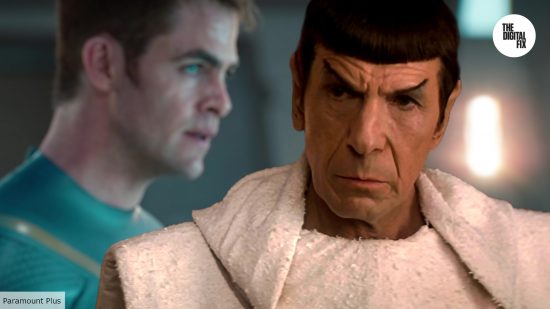Leonard Nimoy’s Spock has always been a fundamental piece of connective tissue, joining various parts of the sprawling Star Trek franchise together through his presence. The character was pivotal in the TOS era of TV and film, alongside Shatner’s Kirk, but he’d also have a significant cameo in TNG, and later on, a fundamental role in the JJ Abrams reboot movies.
In fact, in Star Trek 2009, it was Nimoy’s Spock who fractured the Star Trek timeline, creating the alternate Kelvin Universe. This allowed Abrams and co. to breathe new life into the long-running franchise, telling stories with younger versions of the Star Trek characters fans all know and love. It also allowed the team behind the movies to circumvent canon, something that Nimoy described as a “wise idea.”
“I think the alternate universe was necessary,” he said, speaking with StarTrek.com. “If they didn’t do the alternate universe, they would have broken canon in other ways. It was constricting. There was so much history to be dealt with that if they did not do the alternate universe it would have been so constricting and it would have been very, very difficult to tell an exciting story without stepping on some toes somewhere.”
He concluded, “So, by doing it this way, I think they gave themselves a new canvas to work with. I think it was a very wise idea.”
To the surprise of absolutely zero Star Trek fans, Nimoy is of course right. Once the decision had been made to tell stories with younger versions of Kirk, Spock, Bones and co. the alternate universe became the best way to facilitate it. As the legend noted, there were simply too many years of established canon that would have made telling new stories too complicated and restrictive.
The unfortunate truth of the matter is, though, that the creative team behind the new Star Trek movies never really took maximum advantage of the freedom they gave themselves to play with. The first movie spent its runtime establishing characters who Star Trek fans were already incredibly familiar with, while Into Darkness was a failed attempt to re-do the stunning The Wrath of Khan.
Only Beyond tried to be truly original, though a reliance on over-familiar Star Trek tropes (villain wants revenge!) even left this feeling like something we’ve seen before.
That’s not to say that the new Star Trek movies aren’t great (they mostly are, and the prospect of Star Trek 4 will always be tantalizing) but perhaps, in hindsight, the films should have tried to tell stories with new characters instead, which would have prevented the need for the alternate timeline in the first place.

But, for a while now, that’s been one of Star Trek’s great weaknesses: a lack of confidence in telling fresh stories with fresh characters, instead relying excessively on prequels and reunions. Hopefully, soon, that could change.
For more Star Trek fun, see our ranking of the Star Trek captains, or our list of the best way to watch the Star Trek movies in order.
